The Egyptian and Near Eastern Collection of the Kunsthistorisches Museum, among the world’s most important collections of Egyptian antiquities, is located in Galleries 1 to 9 and consists of more than 17,000 objects that date from a period of almost four thousand years, from the Egyptian Pre-Dynastic and Early Dynastic periods (ca. 3500 – 4000 BC) to the early Christian era. Geographically, their origins range from Egypt, Nubia, the eastern Mediterranean and Mesopotamia to the Arabian Peninsula.
Check out “Kunsthistorisches Museum“
In the early 19th century, avid interest in collecting Egyptian antiquities began in Europe and there was an emancipation of the genre when Napoleon invaded Egypt (1798-1799), resulting in unparalleled esteem for Egyptian culture. The focus of the Near Eastern Collection is on artifacts from the ancient culture of southern Arabia.
Among its highlights are the richly decorated Offering Chapel of Ka-ni-nisut from the Old Kingdom, numerous sarcophagi and coffins, animal mummies, examples of the Book of the Dead, grave stelae, divine figures, objects of daily life (clothing, cosmetic articles, etc.), masterpieces of sculpture (Reserve Head from Giza, etc.), facial stelae from southern Arabia and a depiction of a lion from the Ischtar Gate in Babylon.
Here is the turbulent historical timeline of the collection:
- Around 1560, an emissary of the Austrian imperial family purchased, in Constantinople, the kneeling figure of Gem-nef-hor-bak, thus laying the foundation for a collection of Aegyptiaca.
- In the 18th century, the few Egyptian antiquities already in Habsburg possession were held in the coin collection and cabinet of antiquities.
- In 1821, physician Ernst August Burghart considerably expanded the holdings of Egyptian artifacts by purchasing objects in Egypt.
- At mid- 18th century, Anton Ritter von Laurin, Austrian general consul in Alexandria from 1824 to 1849, received significant gifts of Egyptian antiquities. He is also credited for the discovery of the magnificent stone sarcophagus of Nes-shu-tefnut.
- In 1869, three original Egyptian monolithic columns excavated in Alexandria were given as a gift to Emperor Franz Joseph I.
- In 1881, Crown Prince Rudolf, the son of Emperor Franz Joseph, acquired numerous Egyptian artifacts during his travels to Egypt.
- Several years later, the collection received a generous gift, from the Egyptian government, of coffins and coffin ensembles found in a a so-called cachette in Thebes.
- Towards the end of the 19th century, the Miramar collection of almost 2,000 objects from the possession of Emperor Maximilian I of Mexico was added to the inventory of the imperial collections.
- Between 1882 and 1895, Eduard Glaser undertook four expeditions to Yemen, collecting Old South Arabian inscriptions that remain of fundamental importance for the study of ancient Yemen.
- In the first half of the 20th century, more additions were the result of archaeological excavations in Egypt and Nubia financed by the Austrian Academy of Sciences.
- Between 1912 and 1929, excavations on the rocky plateau of Giza unearthed artifacts from the Old Kingdom such as the famous Reserve Head, numerous tomb statues, inscribed and reliefed architectural components such as false doors and architraves, coffins of stone and wood, Canopic jars, jewelry, vessels of various materials, etc.
- In 1914, private financing made possible the purchase of the Offering Chapel of Ka-ni-nisut from the Egyptian Antiquities Service.
The small but significant collection, structured in four large areas (funerary cult, cultural history, sculpture and relief and the development of writing), take you through ancient Egyptian life, culture and religion. They are housed in magnificently decorated rooms following an Egyptianesque design, part of the original plan of architects Gottfried Semper and Karl von Hasenauer, offering an immersive experience with the walls, ceilings, columns and even the door arches of several rooms matching the Egyptian topic in terms of design and decoration.
In Gallery 1, instead of the marble pillars, the architects reused the three, more than 6 m. high, original Egyptian monolithic columns from excavations in Alexandria, to support the ceiling. On display are mummies, sarcophagi, scarabs, coffins and canopic jars (where the internal organs were stored for the afterlife). Particularly impressive was the giant sarcophagus of Pa-di-pep from the late-period 26th Dynasty.
Murals on paper, which lend a special character to the large first hall, are copies of mural paintings from the tomb of Prince Chnum-hetep at Beni Hassan in Middle Egypt and were made by Ernst Weidenbach for the Vienna World’s Fair of 1873.
Gallery 2 houses the actual Offering Chapel of Ka-ni-nisut (a high-ranking civil servant from around the 4th/5th dynasty, some 4,500 years ago), a mastaba or large tomb which was shipped over from its location in Giza in 1914. You can go into the chamber.
Gallery 3 has a collection of ushabti which were left in tombs to take on manual tasks for the deceased in the afterlife. They sometimes also included model overseers to manage the laborers.
Gallery 5, dedicated to funerary literature, displays scrolls, wall inscriptions and similar containing the spells and texts required to ensure safe passage into the afterlife including an original papyrus showing a pictorial guide to the underworld.
Gallery 4, leading off Gallery 5, covers magic and gods. On display are various mummified animals, including a cat, crocodile, fish and snake. There’s even a tiny coffin built for a shrew (a divine animal representing the sky god Horus).
Gallery 6 displays clothes, pottery and jewelry from the time while Galleries 7 to 9 displays various busts, statues, temple items and similar. In Gallery 7 are false doors that acted as symbolic gateways between the present and the hereafter plus the unusually lifelike and chubby statue of Sebek-em-saf from 1700 BC..
In Gallery 9, there’s the unfinished 2nd century BC sarcophagus of priest Pa-nehem-isis whose every surface is inscribed with symbols.
Egyptian and Near Eastern Collection: Raised Ground Floor, Kunsthistorisches Museum, Maria Theresien-Platz, 1010 Vienna. Tel: +43 1 525 24- 4902. E-mail: info.ansa@khm. Open Tuesdays – Sundays, 10 AM – 6 PM, Thursdays, 10 AM – 9 PM.

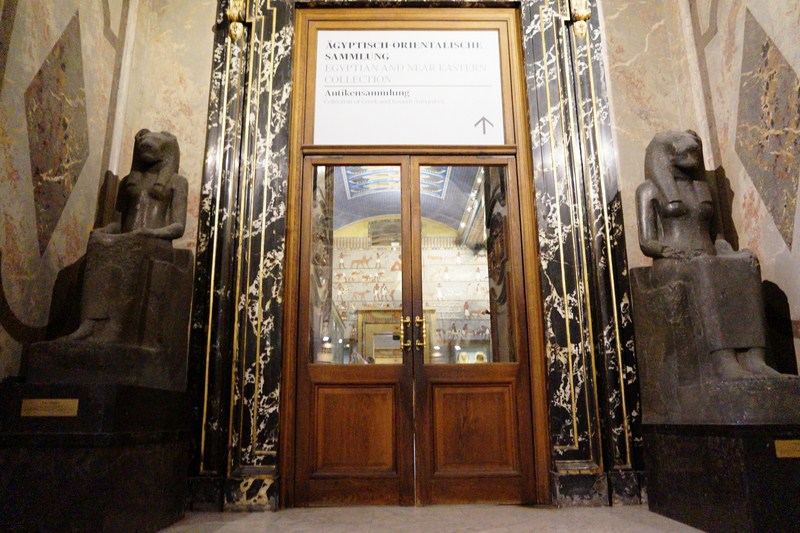

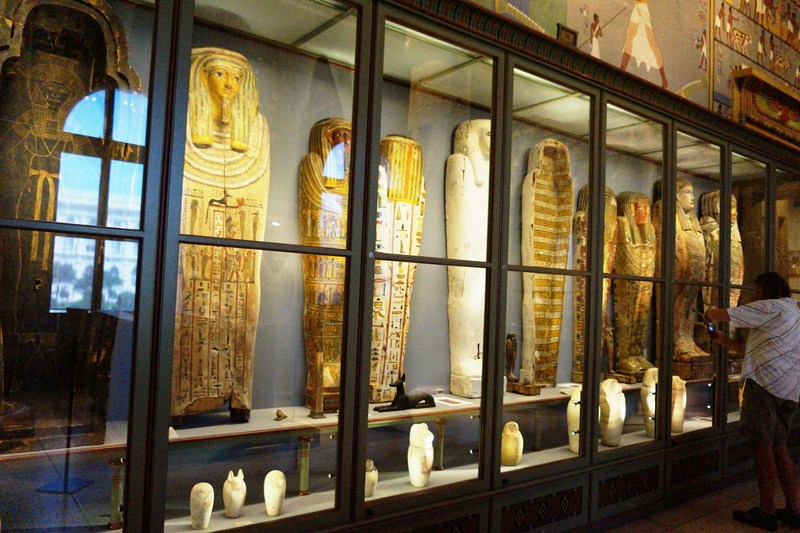

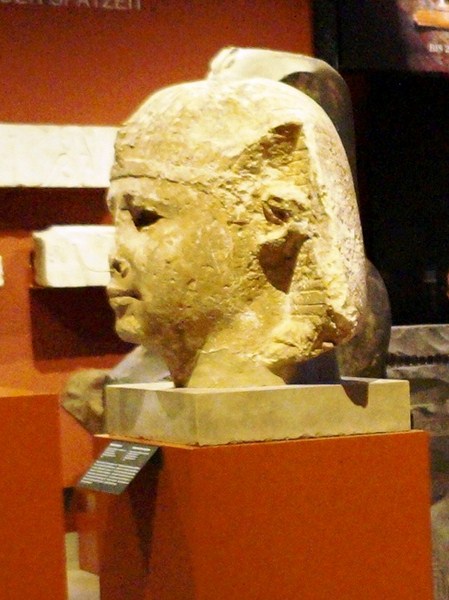
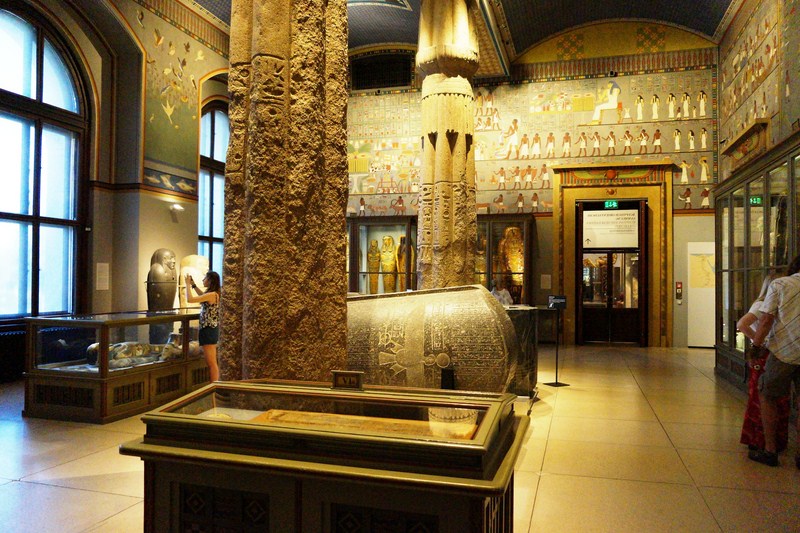
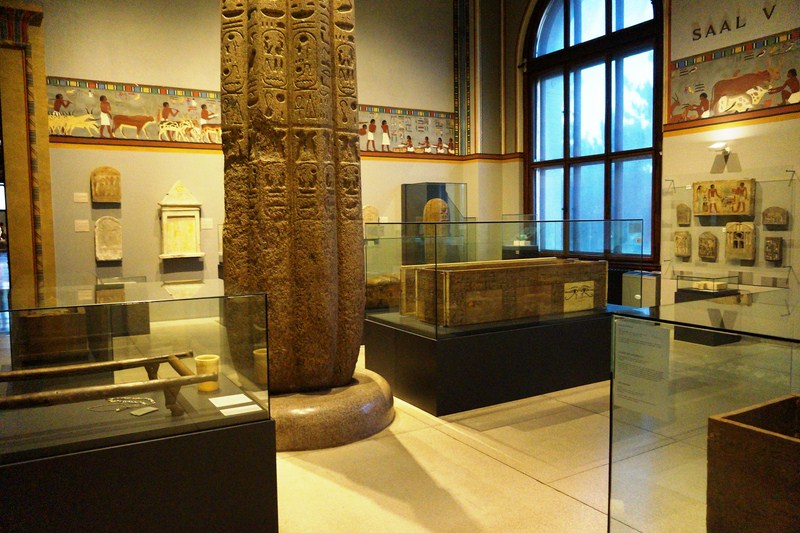
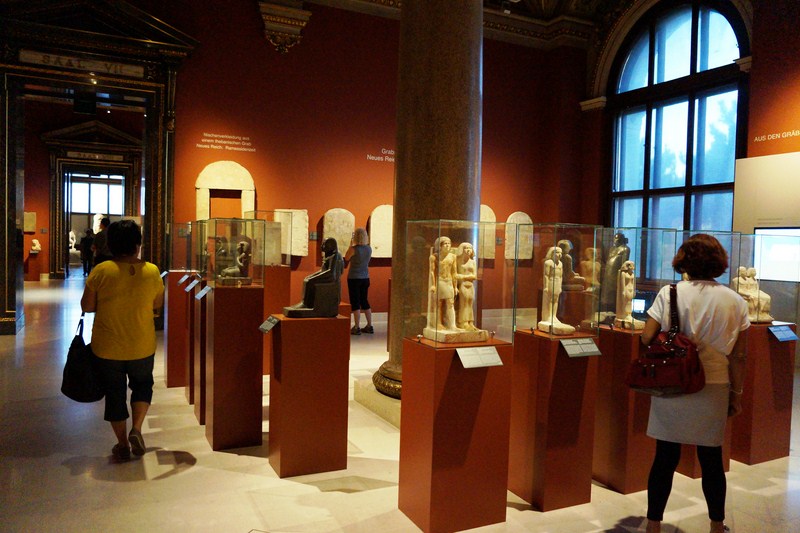
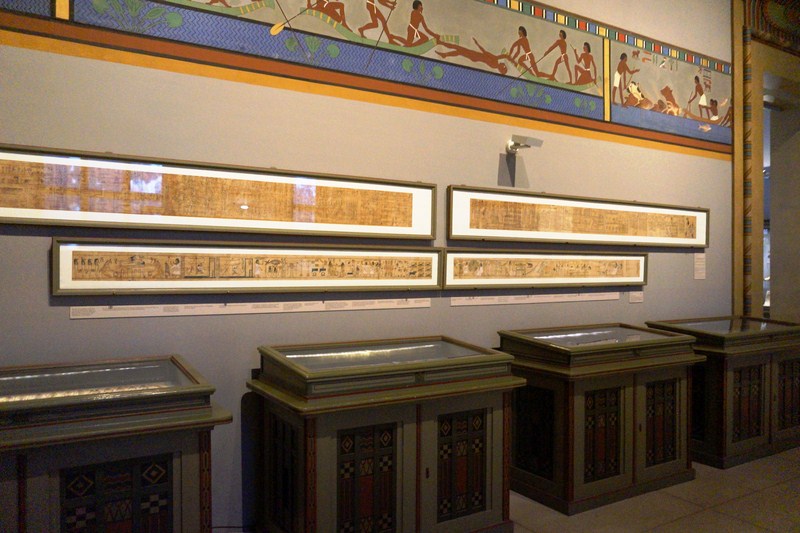
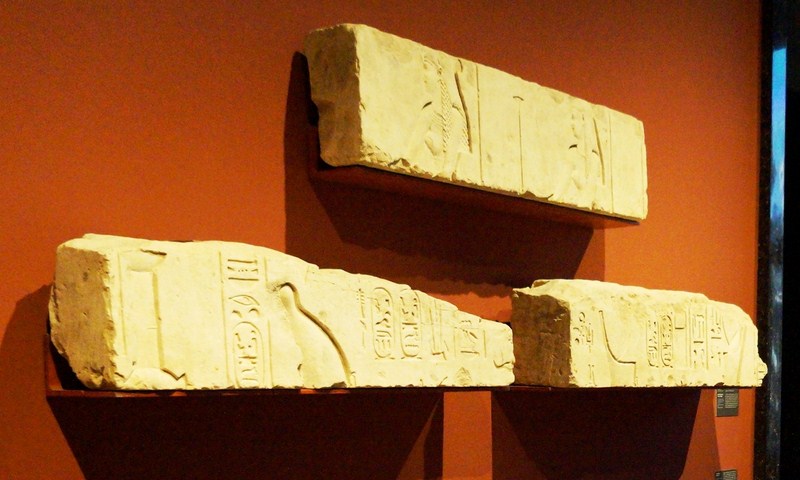


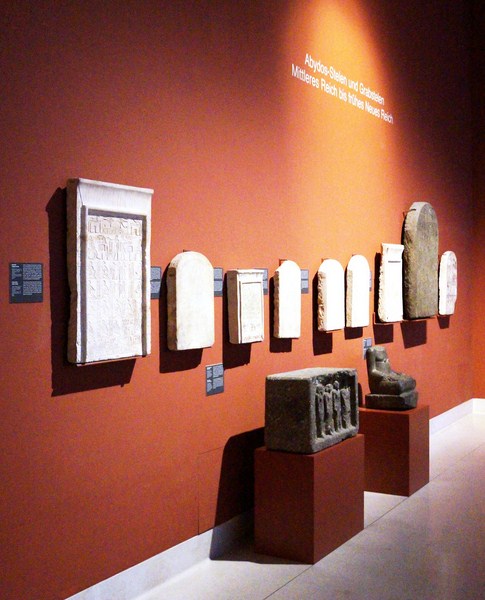
Pingback: Kunsthistorisches Museum (Vienna, Austria) – B.L.A.S.T. – Live Life to the Fullest ……… Don't Stay Put